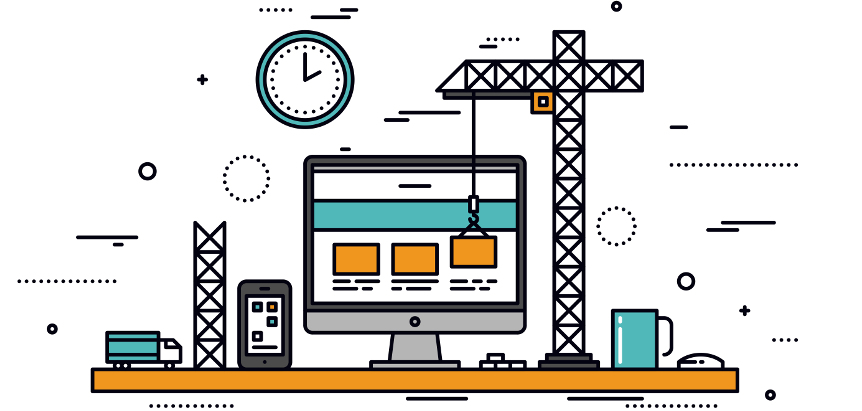
A well-planned and well-executed website serves as a valuable marketing tool. That said, having an efficient process in place to plan, design, and to build a business website is crucial to the overall success of the project.
Through years of experience, we’ve identified four key stages of website design and development to create websites that stand out from the competition and increase user engagement.
stage 1: Discovery, Research & Strategy
Let’s start with your digital strategy. It’s the ground for your website, and it makes your project success and failed.
To start, establish the overall goals for your project and conduct thorough research on your industry, competition, and target market. It’s often helpful to create user personas to better understand your audience and what they hope to achieve when they visit your site. That is what we are doing when starting a project.
Consider performing a review of your current analytics to find areas that need improvement, as well as track mobile and specific browser usage.
Content has been and always will be king, so a content strategy should be established early in the process to ensure your message is relevant, comprehensive, and compelling. If you have an existing website, you’ll need to perform an audit to determine what content you have, where, what can stay, what should go, and what can be modified for optimal use on the new site. An effective content strategy will drive the site architecture and user interface design as well as play an important role in development.
The next step involves finalizing your sitemap and creating clickable prototypes to establish page structure and effective user flows. Before moving to the design phase, it might help to create visual mood boards to determine imagery, colors, fonts, and the overall look & feel of the interface design.
Before you wrap up the planning phase, be sure you’ve left no stone unturned. In the past few years, there has been a huge increase in mobile usage that has spurred several trends like responsive design and long-scroll pages — you’ll want to make sure your shiny new site is optimized for all the devices your customers use.
STAGE 2: Creative & Design
During the second phase of website design and development, the user interface begins to take form. The page layouts and design elements that are created should come right from the strategy you established during the discovery and research phase. It’s important to remember that design is subjective and your website is not for you — it’s for your audience. Design decisions should be made based on your user personas, not your personal preferences.
Typically, it’s best to start with the homepage design, then move onto the the various interior page templates and modules that will ultimately form a complete user interface that’s on-brand and achieves your goals and objectives. Depending on your analytics, you may want to pursue a “mobile-first” design strategy.
To complete the design phase, source files should be prepped and organized with the development team to enable them to produce a “pixel perfect” front-end interface.
STAGE 3: Website Development
This might be the most misunderstood phase of the process as it can feel a bit like magic. While great developers may seem like wizards, there is no magic trick to building a highly functional website. There are no simple switches and the success of the development team relies greatly on the planning performed in Phase 1.
The following steps are typically completed to turn an interface design into a functional website:
- Set up development server;
- Install content management system and any plugins necessary to achieve desired functionality;
- Build website theme consisting of all interface design templates, including responsive state;
- Plan and implement any types of relational content;
- Populate page content via the content management system.
At this point, the site is finally ready for review and testing to be completed in the following phase.
STAGE 4: Testing, Training, Launch & Maintenance
After all the research, planning, and development you’re almost there. However, launching your brand new website isn’t as simple as pressing a button.
The site should pass a rigorous set of quality control tests before it’s ready for primetime. If budget allows, it’s ideal to conduct focus group testing in which users will be asked to complete a variety of tasks using the new site.
The number of browsers and devices has increased exponentially in recent years, so don’t forget to test on a wide variety of platforms including Mac, PC, iOS and Android.
Ultimately, the goal should be to create a site that delivers an exceptional user experience anywhere and everywhere and assures that users on all devices are able to use the site as intended.
With the completion of testing, you’re ready to launch! There is an infinite number of hosting providers available and you’ll want to find a host that’s stable, secure, and meets the needs of your site. For more information on hosting, check out our recent blog post.
Once your site is live, you’ll want to make sure that you’re comfortable using your content management system in order to keep your site’s content current. It’s also important to keep the content management system itself up-to-date by running software updates as they become available and regularly backing up your site.
In Conclusion
In some ways, the launch of your site is just the beginning. In future installments, we’ll cover tips, tricks, and tactics you can use to promote your new site and increase traffic. After all, a new website without traffic is no better than a billboard in the middle of a forest.
We have outlined the basic steps to plan, design, and build an effective website. We are ready to put it into action -just waiting on your request.


